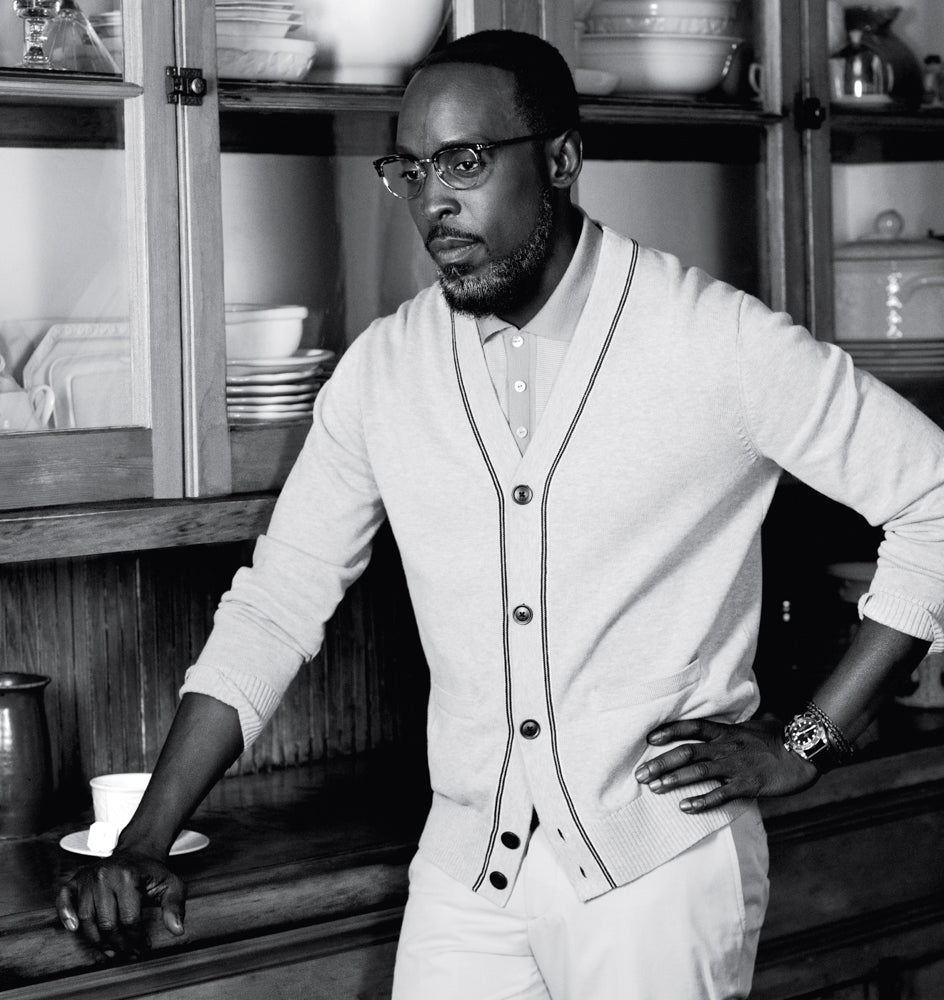
Outside The Lines
OUTSIDE THE LINES

In his eighty-two years on planet Earth, genre-jumping French artist Tomi Ungerer has been a best- selling children’s book author, erotica illustrator, political agitator, and cultural outlaw. Banned from U.S. libraries for most of his career, he’s finally getting the recognition he deserves.
There are always high-energy art exhibitions in New York, and yes, the Tomi Ungerer show was high energy. But here’s the difference. At this show, you could actually feel the energy. What do I mean by this? Okay, the crowds swelling into the Drawing Center’s space on Wooster Street — and those unfamiliar with the tepid rituals of art-world openings can have no idea how unusual this is — were looking pretty damned closely at the art on the walls, in vitrines, and onscreen, and were obviously pumped. There was a shared knowledge that this was an event. As it was. This was Ungerer’s first New York rollout since his unseemly departure well over four decades ago.
So. Our story begins with the birth of Tomi Ungerer in Alsace, a region of France slap-bang on the German border, a circumstance brought home when it was taken over by Hitler’s forces when Ungerer was nine. In 1956, Ungerer moved to New York, at age twenty-five. His drawing talent was and is prodigious and he is mercurially inventive with words and ideas, so his lengthening rack of children’s books rapidly became genre classics.
Alongside these Ungerer was soon producing a stream of lacerating political posters, like Black Power/White Power, and advertising campaigns, for the Village Voice and the New York Times, among others, which made it combustibly clear that he was not confined to Kiddie World. Examples of all gleamed and glowered at the Drawing Center.
“Tomi Ungerer is commonly described as an illustrator. He has done illustrations, yes, but by and large this is ridiculous.”



Oh, yes. And other stuff too. Such as erotic images from Fornicon, which are way more inventive than Barbarella, and those from Totempole, depicting chicks in bondage with a verisimilitude that might have got a nod from Ingres, and the images of Hamburg dominatrices from Guardian Angels of Hell. The erotic material was in its own room at the end and I was not surprised that the crowd here should have looked particularly highly charged. Nor that many were women, nor that they were cheerfully attentive, rather than giggly.
European honors that have flowed Ungerer’s way since he left for Europe have included the Hans Christian Andersen Award, the National Prize for Graphic Arts in France, and the European Prize for Culture. In 2007 he became the first living artist to have a state-funded museum devoted to his work in France. Claire Gilman, curator of the Drawing Center show, contrasts this in a cogent catalog essay with the fact that Ungerer is dimly remembered, when at all, in the city and country in which he had shone like a star — and tells us why.
It was the end of the sixites and Ungerer was at a children’s book convention, fielding questions. In came one. How could the author of children’s books also be turning out hardcore erotica? He made a rational response. But in came zinger after zinger, as Ungerer became increasingly furious. In Far Out Isn’t Far Enough: The Tomi Ungerer Story, a 2012 documentary by Brad Bernstein, Ungerer says that he used “the word you shouldn’t ever use: if people didn’t fuck, you wouldn’t have any children and without children you would be out of work. From there on it went really badly.” Indeed, yes. Tomi Ungerer’s Mother Goose was cooked. His books vanished from libraries. In 1971 he self-deported to rural Nova Scotia, Canada. Five years later, he moved on to County Cork, Ireland, where he, his wife, and daughter Aria remain.
It would be all too easy to characterize the Tomi Ungerer story along the lines of his questioners at the convention: the creator of children’s books versus the erotic artist. But anybody who kept their eyes open at the Drawing Center — indeed, anybody who accesses his body of work — will see it is way more interesting than that. The man is a shape-changer, surfing from subject to subject, style to style. The drawings in The Party, his savage black-and-white take on Manhattan’s upper crust, are angrier than George Grosz, more unforgiving than Ralph Steadman. His work in rural Nova Scotia, immediately after departing the city, is detailed and pastoral.




Claire Gilman addresses this issue and is inclined to put it down to Ungerer’s origins in a shifting Europe, specifically Alsace, a country that is neither quite France nor exactly Germany. Perhaps. But I’m not convinced. There have been countless rootless artists who achieve an identity in their work as crisp as the profile on a Greek coin. So I asked Ungerer himself.
“I have always been baffled by the multiple styles in your work,” I said. “I simply cannot think of anybody else. Picasso worked in many different styles, but it was always Picasso.”
“I don’t know anybody else. It is really my problem,” Ungerer agreed. “It comes from the fact that I have too many ideas. I cannot accommodate so many ideas except with different styles. I may pick up a style from thirty years ago, and I can easily fall back into it. I guess if I went back to Canada I might recuperate and recycle my old style there because it was fit for the place and the circumstances. I just take my chance as I am. Which is my freedom.”
“I’m not even sure if style is the right word,” I said. “Style is like
taking off one jacket and putting on another. But it’s as if when your
mind is working in a certain way, your hand works that way, too.”
“Exactly.”


The darkest works in the show come from The Party, but there was some strong stuff from Babylon, as well. “It takes on all the problems of our time, from drugs to ecology to religion,” Ungerer says. “There is a drawing in the show of a little girl praying in front of Mickey Mouse. It’s not making fun of religion. Like the little infant Jesus has been replaced by Santa Claus. It’s the mercantile revolution.”
Sometimes I was put in mind of Kubrick’s The Shining, so I asked if Ungerer had seen it. “Oh, I love the book. And I loved the film.” Your Party reminds me of the party scenes, I said. “That’s something else. Because I did my own Shining. For several years, I took my family to a hotel that was in the mountains, the one that influenced Thomas Mann. I did a book where the concept of death is white instead of black, so that the snow comes in. The hotel had a big library, where all the pages were spotted by blood, a swimming pool where the old mortuary used to be, and there was still a tunnel for the dead. This is maybe my favorite book I’ve done of all. It is called Warteraum, which means ‘waiting room’ in English. It is out of print. That was the slowest selling book I ever did.”
Back to the circumstances that led to Tomi Ungerer’s departure from New York in 1971. I mentioned the crowds in the erotica room, specifically the number of women there. “They weren’t giggling like schoolgirls,” I said. “But they were enjoying it. I think the world has changed. New York has changed.”
“Completely. Taschen did a huge volume of my Erotoscope, and there were more women than men at the signing. So there are more women now coming for a book like this. This is exactly the purpose of my work, to achieve that.”
I observed that this was one area of experience we had in common. I came to New York in ’76 with a contract from New York magazine; as two of my earliest pieces dealt with the so-called Mayflower Madam, who ran a so-called escort agency, and with the Andrew Crispo affair, a gay murder case, I quickly racked up several weeks in the sexual underground. I added that I was in total agreement with what he has said on the subject, which is that individuals do not choose to be what they are.


“So I have always said,” Ungerer said. “Sexually what interests me with a partner is her fantasies, and to play out those fantasies. Which is a form of liberating the person. This is how I came upon this girl, who came to my studio. She was looking for work. She ended up on the cover of Penthouse magazine. I said, What do you like to do? And she said she would like to be my slave. So I played that. And she had another fantasy. I think it’s wonderful. One develops a fantasy and one stages them. And then one develops one’s own fantasies. You are allowed to do anything if it’s consenting… ” As long as children or animals are not involved.
“Exactly. That’s it! But even with animals. My God! If a farmer wants to get laid with one of his chickens … I mean, it’s still his business. I couldn’t do it. But if it doesn’t hurt the chicken… ” Interspecies mating has been known in the animal kingdom, I observed.
“And then another thing is rape. I don’t understand it erotically, this thing that is as old as man. How do you get it up? How do you get it up if it’s somebody who does not consent? The only eroticism is acceptance and desire.”
A last question. Drawing. Ungerer is commonly described as an illustrator. He has done illustrations, yes, but by and large this is ridiculous. Admirers of Thomas Mann will not get the reinforcement from Ungerer that Lewis Carroll admirers derive from Tenniel. Nor is he a cartoonist. So what is he? An effortless trilingualist, he picks a French word, dessinateur, for which there is no satisfactory Anglo translation. But “drawer” will do.


“The man is a shape-changer, surfing from subject to subject, style to style.”
Drawing seems to be coming back, I noted, despite or because of its plain, ornery singularity in our fluid time of screens, apps, and 3-D headsets. Just ask Charlie Hebdo. Also note that one of Tomi Ungerer’s posters at the Drawing Center is a strong image reading: “PAS DE LIBERTÉ SANS LIBERTÉ DE LA PRESS: REPORTERS SANS FRONTIÈRES.”
“Man expresses himself by hand,” Ungerer said. “It’s been disregarded and forgotten. But now it’s coming back! It’s coming back, yes.” He stood up as I left, and I noted a red insignia on his lapel: the Legion of Honour. Ungerer noted that when he is at home in Europe he feels no firm identity. “But when I am abroad, I represent France.” He added, “I am not duty free!”
I dropped my wallet as we swapped cards, leant to pick it up. “Aha! I just had an idea,” he said. What? “If we were both kangaroos and on our heads, we could both have our heads in each other’s pockets,” he said. Two perfect Tomi Ungerers.




